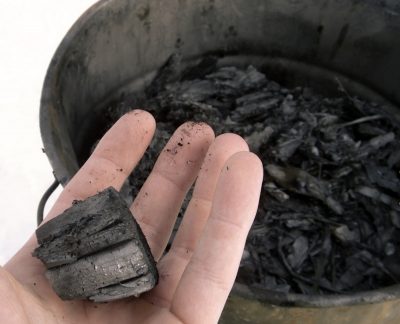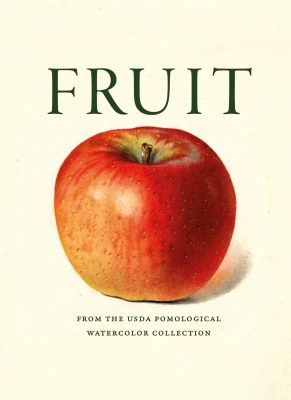AND THOREAU ADVISED…
/7 Comments/in Soil/by Lee ReichBiochar vs. Wood Chips
People are funny. Take, for instance, a fellow gardener who, a couple of months ago, shared with me her excitement about a biochar workshop she had attended. “I can’t wait to get back into my garden and start making and using biochar,” she said.
Biochar, one of gardening’s relatively new wunderkind, is what remains after you burn wood with insufficient air. It’s charcoal. Stirred into the soil, its myriad nooks and crannies provide an expansive adsorptive surface for microbes and chemicals, natural and otherwise. Biochar, being black, darkens the soil, and dark soil is generally associated with fertility, although that’s not always the case. Because biochar is mostly elementary carbon, it resists microbial decomposition, so it’s carbon is less apt to end up in the atmosphere as carbon dioxide.
In contrast, when raw wood — wood chips or sawdust, as examples — are added to soil, it feeds microbes and then plants as it decomposes, eventually turning to organic matter, sometimes called humus. Humus is a witch’s brew of compounds with beneficial effects on soil’s nutritional, biological, and physical properties. So is cooking up a batch of biochar and digging it into your soil better for the soil and really worth the effort?
ART, HISTORY, AND QUAINT NAMES
/4 Comments/in Books, Fruit/by Lee ReichThe U.S. Dept. of Agriculture Supporting Artists?!
I’ve been thumbing through my latest book, Fruit: From the USDA Pomological Watercolor Collection. Most of the book is illustrations of many kinds and varieties of fruits painted by 20 artists over the years from 1892 to 1946. Most obvious is the beauty of the paintings. Less obvious is what they tell of fruit growing and marketing in this country.
For instance, why were the watercolors commissioned — by the U.S. Department of Agriculture, no less? To answer that question let’s first backtrack to before the middle of the 19th century. Up until then, fruit trees were planted mostly for cider, brandy, or to feed pigs. Fermented beverages were a more healthful drink than water at the time. (Just imagine all the tipsy kids wandering around!)
ACID RULES
/3 Comments/in Soil/by Lee ReichSpreading Limestone!
Visiting Clyde (not his real name), a farmer friend, one summer day a few years ago, I came upon him sprinkling some white powder along a row in preparation for planting. In response to my wondering what he was doing, he said he was spreading limestone. I was surprised.
In much of the eastern part of the U.S., unless you grow only native plants, or a rather narrow spectrum of exotic plants, you probably do have to do something to make the soil less acidic. And remember, tomato, apple, peach, marigold, rose, and many other plants in our gardens are exotics. Not only are many soils in the East naturally too acidic for most of what we grow in our gardens and farms, but soils here always are becoming more so.
Acid rain is one reason for this, but even before acid rain, the abundant rain that falls in this part of the country has been leaching soils and making them more acidic since time immemorial. As a general rule, areas where rainfall — not necessarily acid rain — exceeds about 30 inches per year, enough base-forming ions such as those of calcium, magnesium, and potassium get leached down and out of the ground to make soils more acidic.
But that’s not all. Calcium, magnesium, and potassium are plant nutrients, so harvesting crops takes them off site, increasing soil acidity. Some fertilizers, such as those that contain nitrogen in the form of ammonium, also make soils more acidic.


